If you’re a homeowner in London, Ontario, choosing the right roofing material is crucial to protecting your home against the region’s unique climate. Asphalt roofing has long been a popular choice for its affordability, durability, and versatility. Whether you’re upgrading your current roof or building a new home, understanding the advantages and considerations of asphalt roofing can help you make an informed decision. From benefits and installation to maintenance tips, this article dives into everything London homeowners should know about asphalt roofing.
Continue readingTag Archives: roofing guide
Preparing for Roof Leak Repairs: Everything You Need to Know
Roof leaks can be both an inconvenience and a major source of worry for homeowners. Left unchecked, they can lead to costly damages, not just to your roof but to the structural integrity of your home. Water damage can result in ruined ceilings, mold growth, and deterioration of walls and insulation, creating a cascade of problems over time. Addressing roof leaks promptly is not just a matter of convenience; it’s a critical step in safeguarding your home and preventing expensive repairs down the line.
This guide will walk you through identifying roof leaks, equipping yourself with the right tools, making temporary repairs, and understanding when to call in the pros for long-term solutions. Lastly, you’ll learn how preventative maintenance can save your roof from future problems.
Continue readingHow Long Should an Asphalt Shingle Roof Last?
When investing in roofing material, durability is top of mind for homeowners and property managers alike. Asphalt shingles are a popular roofing choice due to their affordability, versatility, and ease of installation. But how long can you expect them to last? While the average lifespan of an asphalt shingle roof is approximately 20-30 years, a multitude of factors can influence this range. This comprehensive guide will explore what affects asphalt shingle longevity, the different types of shingles and their expected lifespans, signs of wear and tear, and tips to extend your roof’s life.
Factors Affecting Asphalt Shingle Roof Lifespan

Several variables affect the lifespan of your roof, starting from the type of shingles you select to the environmental conditions they endure. One major factor is climate. Constant exposure to sun, rain, snow, and wind can significantly wear down a roof. For example, UV rays from prolonged sunlight can weaken the integrity of shingles, while heavy storms cause granule loss or even dislodge shingles altogether. Freezing and thawing cycles in colder climates can also expand and contract the shingles, leading to cracks over time.
Another important determinant is the quality of installation. Even the most durable shingles will fail prematurely without proper installation techniques. Effective ventilation and adequate underlayment prevent structural damage, moisture retention, and heat buildup, all of which could shorten your roof’s lifespan. Always hire experienced and certified roofers to ensure optimal performance.
Finally, maintenance plays a crucial role. Neglecting minor repairs can lead to major issues, such as leaks or rot, that compromise the overall structure. Simple preventive measures, such as cleaning debris from gutters or inspecting for damage after storms, can make a marked difference. While environmental factors may be out of your control, proper installation and consistent maintenance give your roof the best chance at hitting or even exceeding its expected longevity.
Types of Asphalt Shingles and Their Expected Lifespans
The type of asphalt shingles you choose will largely dictate how long your roof lasts. There are three primary categories of asphalt shingles, with each offering distinct lifespans and performance benefits.
Standard asphalt shingles, also known as three-tab shingles, are the most common and economical type. These shingles are lightweight and cost-effective but generally have the shortest lifespan, ranging between 15 and 20 years. Their thinner construction makes them suitable for moderate climates, though they may struggle in areas prone to severe weather.
Architectural shingles, also called dimensional shingles, offer a step up in both aesthetic appeal and durability. Their layered design gives them a more textured, three-dimensional appearance that mimics more expensive roofing materials like slate or cedar. With proper installation and maintenance, architectural shingles can last 25 to 30 years or more.
Lastly, there are premium asphalt shingles, which represent the pinnacle of quality in the asphalt category. These shingles are thicker, heavier, and better equipped to withstand extreme weather. Premium shingles often come with extended warranties and can last 30 to 50 years, making them an ideal choice for those seeking longevity and durability.
Choosing the right type of shingle for your needs depends on both your budget and your local climate. While architectural or premium shingles may require a higher upfront investment, their longer lifespans and better performance can save money in the long run by reducing replacement and repair costs.
Signs Your Asphalt Shingle Roof Needs Replacing
Over time, even the most well-maintained roof will begin to show signs of wear. Knowing when to replace your asphalt shingle roof is key to avoiding further damage to your home. One of the clearest warning signs is curling or buckling shingles. These deformations indicate that shingles are no longer tightly sealed, leaving your roof vulnerable to water penetration.
Missing shingles are another red flag. Whether caused by wind or aging adhesive strips, gaps in your roof leave underlying materials exposed to the elements, accelerating deterioration. Similarly, widespread granule loss is a telltale sign of aging shingles. If you notice excessive granules collecting in your gutters or downspouts, it may be time for a replacement.
Leaks and water stains inside your home should never be ignored. Moisture infiltration can lead to mold growth and structural damage, which are far more costly repairs than replacing a roof. Finally, if your roof is older than 20 years, it’s worth having it professionally inspected, even if there are no obvious problems. A proactive assessment can reveal hidden issues and help you plan for a timely replacement instead of dealing with an unexpected failure.
Maintenance Tips to Extend Your Roof’s Life
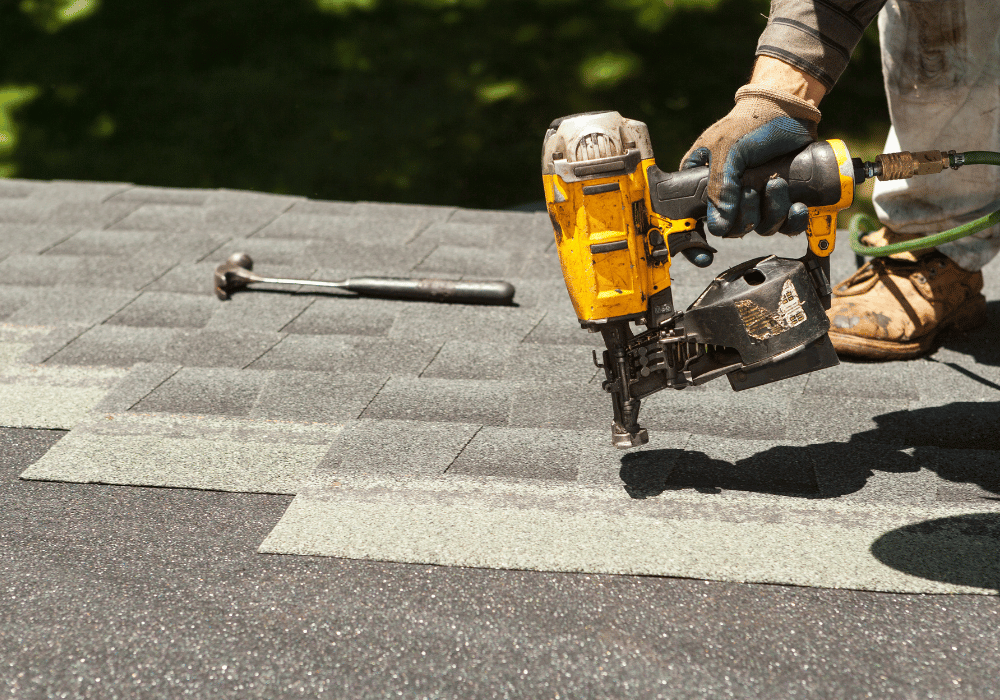
Maintaining an asphalt shingle roof doesn’t have to be an overwhelming task, but it does require consistency. Regular inspections are critical. Aim to check your roof at least twice a year, ideally in the spring and fall, as well as after major storms. Look for damaged, missing, or misaligned shingles, and address issues promptly to prevent more widespread problems.
Keeping your roof clean is another powerful way to extend its lifespan. Debris such as leaves, branches, and moss can trap moisture and lead to rot or algae growth. Use a broom or a low-pressure washer to remove debris periodically, and consider installing zinc or copper strips to prevent algae buildup.
Proper attic ventilation is also crucial for a healthy roof. Without it, heat and moisture can accumulate beneath the shingles, causing them to warp or deteriorate more quickly. Make sure your attic’s ventilation system is functioning properly to keep your roof cool and dry year-round.
Gutters often go overlooked in roof maintenance, but they play a vital role in directing water away from your home. Clogged gutters can cause water to back up onto the roof, leading to leaks or ice dams in colder climates. Clean your gutters regularly, especially during the fall when leaves are more likely to collect.
Lastly, schedule professional maintenance. While many repairs and inspections can be done on your own, hiring a licensed roofing contractor for an annual check-up ensures that no issues go unnoticed. Their trained eye can catch problems that might escape an untrained observer, providing peace of mind and a longer-lasting roof.
Plan for a Roof That Lasts
The lifespan of an asphalt shingle roof depends on many factors, including climate, installation quality, and maintenance habits. By understanding these variables, you can make informed decisions when installing, maintaining, or replacing your roof. Investing in higher-quality shingles, performing regular maintenance, and addressing minor issues promptly can significantly extend your roof’s life.
If you think your roof might be nearing the end of its life, don’t wait until small issues turn into major expenses. Consult with a roofing professional to assess its condition and explore your options for replacement. A proactive approach will ensure that your home stays protected for years to come.
What to Look For When Identifying Roof Wind Damage
Storms can wreak havoc on homes, leaving unseen damage that may worsen over time if left unaddressed. One part of your home that takes the brunt of windy weather is your roof. Identifying wind damage promptly is essential to preventing costly long-term damage. This guide will walk you through key signs of roof wind damage so you can detect issues early and protect your property.
Signs of Missing Shingles
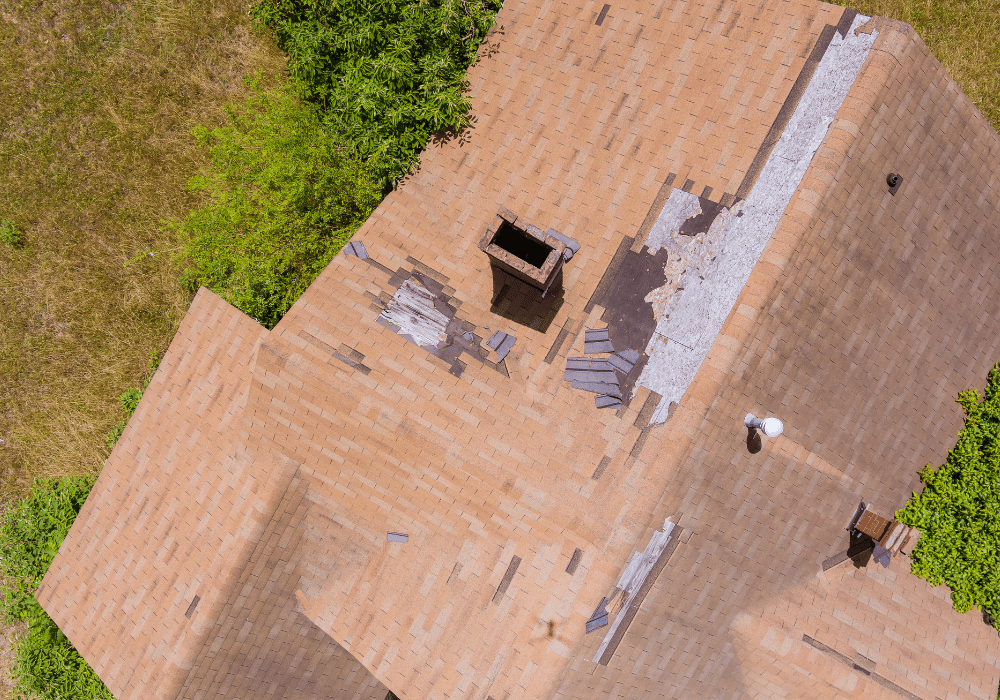
One of the most common indicators of wind damage is missing shingles. High winds can loosen or completely tear shingles off your roof, leaving vulnerable spots exposed. Here’s how to identify this problem effectively:
- Visual Inspection: Step back and examine your roof from the ground. Do you notice any patches where shingles seem to be missing? Broken patterns or bare roof decking are telltale signs.
- Debris Around the Property: Check for shingles scattered around your yard, gutters, or driveway; these could have been ripped off during the storm.
Missing shingles are more than just an eyesore. They can leave your roof vulnerable to leaks, water damage, and structural issues. Addressing them promptly helps maintain your roof’s integrity and prevents further complications.
Granule Loss
Granules are the tiny, sand-like particles on the surface of asphalt shingles. They protect your roof from UV damage and add an extra layer of waterproofing. Wind and hail can strip these granules, leaving parts of your roof exposed. Here’s what to look for:
- Gutter and Downspout Debris: Granules often wash away into your gutters or land near the base of downspouts after a storm. Take a quick look at these areas for small, dark particles.
- Bald Spots on Shingles: Missing granules can leave your roof shingles looking smooth or “bald” in places. If you can safely get a closer look, examine areas that appear lighter or discoloured for granule loss.
Granule loss compromises the protective capabilities of your shingles. Over time, this deterioration can lead to increased wear, reduced energy efficiency, and higher susceptibility to leaks.
Bent or Damaged Flashing
Flashing refers to the metal pieces installed around chimneys, skylights, vents, and other roof edges to divert water away. When winds get intense, they can loosen, bend, or damage these crucial components. Here’s how to spot flashing damage:
- Warps or Bends: Check for any parts of your roof where the metal appears warped, bent, or lifted.
- Missing Seals: Flashing often works hand-in-hand with caulking or seals. Spot any cracks or missing caulk around flashing, as these gaps can lead to leaks.
- Rust or Corrosion: Strong winds sometimes fast-track exposure to moisture, leading to signs of rust.
Damaged flashing compromises your roof’s ability to direct water away, increasing the risk of water infiltration and costly repairs.
Interior Leaks
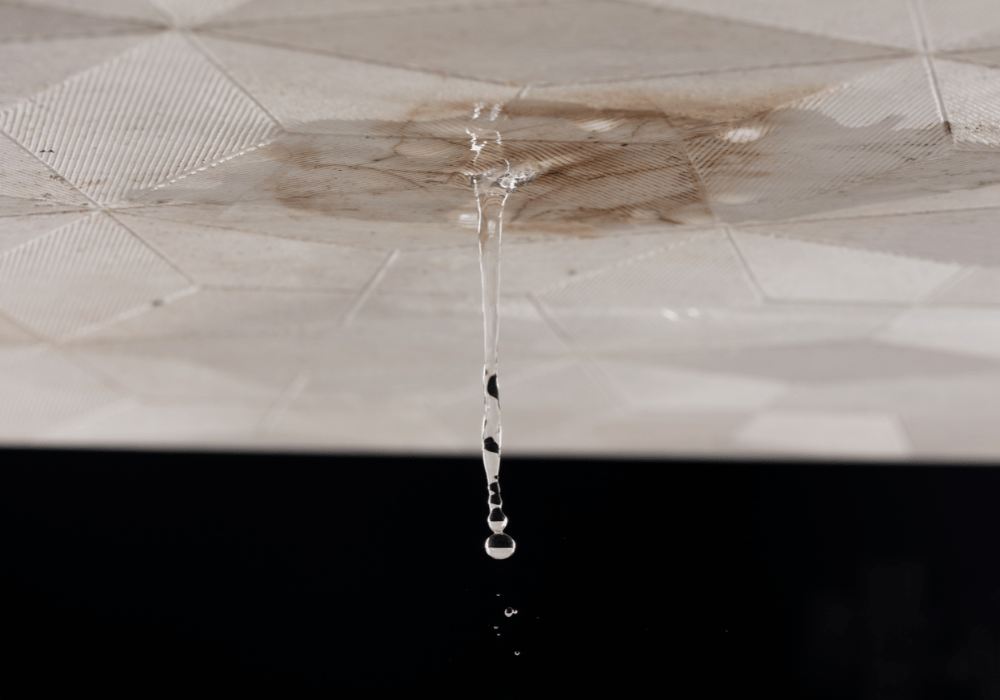
Not all signs of roof wind damage will be visible from the outside. If your roof has suffered structural damage, it may manifest in subtle ways inside your home. Look out for these interior clues:
- Water Stains: Yellow or brown rings on ceilings or walls are clear signs of water damage. These stains are often caused by leaks originating in your roof.
- Dripping Water: If you notice active drips during or after a storm, it’s time to inspect the roof immediately.
- Peeling Paint or Wallpaper: Excess moisture trapped in walls due to leaks can cause paint or wallpaper to bubble, crack, or peel away.
Interior leaks indicate that the roof’s protective barrier has been breached. Neglecting these signs can lead to widespread mould damage, rot, and weakened structural elements.
While you can address minor signs of roof damage yourself, significant issues caused by wind damage require expert attention. Climbing onto a roof can be both dangerous and ineffective for untrained individuals, so hiring a professional roofing contractor is always a smart choice.
A certified inspector will provide a thorough evaluation and recommend tailored solutions to keep your roof in peak condition. They can also help document damage for insurance purposes, ensuring you’re fully supported in the event of a claim.
How Roof Insurance Claims Work: A Step-by-Step Guide for Homeowners
Dealing with roof damage is never a pleasant experience. If you’ve recently faced a storm, fallen debris, or an unforeseen accident causing damage to your roof, one thing is likely on your mind: your insurance claim. Navigating the process of roof insurance claims may seem overwhelming, but understanding the steps involved can ease stress and ensure you’re fairly compensated.
This guide breaks down the process into actionable steps to help homeowners like you successfully handle roof insurance claims. Here’s what you need to know.
Continue readingWhat to Expect During a Roof Installation
A new roof installation is a significant investment that not only enhances the functionality of your home but also contributes to its overall aesthetic and curb appeal. Understanding the process and knowing what to expect during a roof installation can ease your worries and help you prepare for this major project. From the initial preparations to the final inspection, this blog will outline everything you need to know to make the process seamless and stress-free.
Initial Consultation and Estimate
Before starting a roof installation, you’ll typically have an initial consultation with a roofing contractor. During this process, the contractor will inspect your roof to evaluate its condition and determine if a full replacement is necessary. They’ll review material options, offer tailored recommendations based on your budget, and address any specific concerns you may have. Following the consultation, you’ll receive a detailed estimate outlining the project’s costs, including labor, materials, and any additional fees. Carefully reviewing this proposal ensures you fully understand the scope of work and associated expenses.
Scheduling and Preparation
Once you’ve approved the estimate, the next step is scheduling your roof installation. Proper preparation is essential to ensure the process goes smoothly. A reliable roofing contractor will provide a clear timeline, including when materials will be delivered and when work will begin. At this stage, it’s important to prepare your home as well. This may involve clearing your driveway for dumpster placement, moving outdoor furniture or plants to prevent damage, and letting neighbors know about potential noise or disruptions.
Inside your home, take precautions by removing fragile items or securing anything that could be affected by vibrations during the roof removal and installation. While contractors will take measures to protect your property, a little extra preparation on your part can significantly reduce potential risks and ensure a hassle-free experience.
Delivery of Materials
Roofing materials like shingles, underlayment, nails, and flashing are typically delivered one to two days before installation begins, depending on the company. These items are often stored near your property, such as on your driveway or in a designated area. To avoid any inconvenience, it’s important to coordinate with your contractor and confirm where the materials will be placed, particularly if you have concerns about space or accessibility.
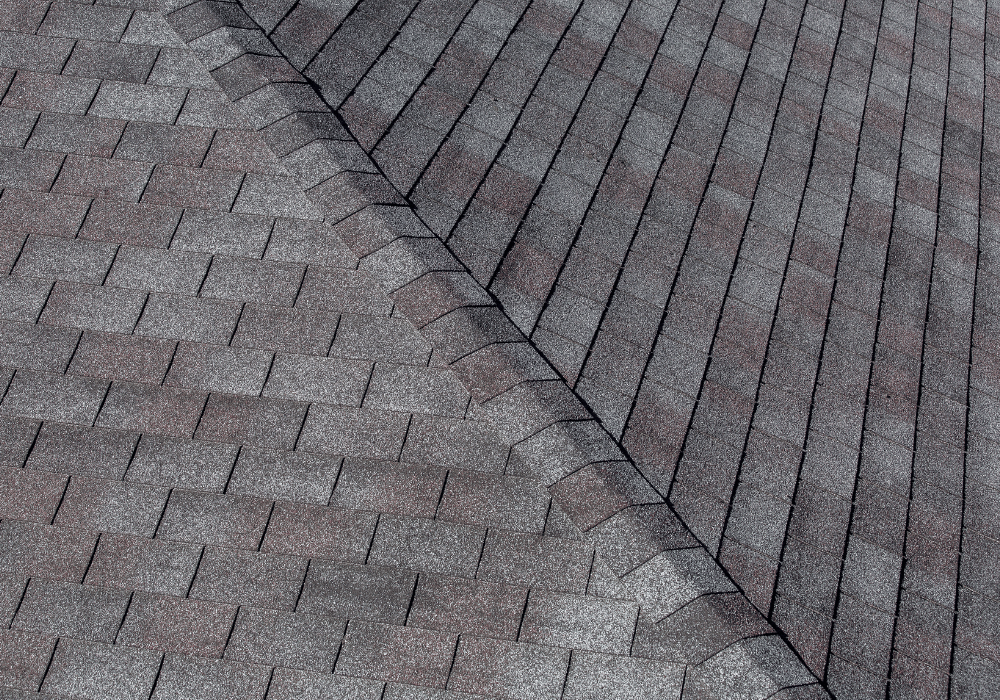
The Day of Installation
1. Setting Up the Site
On the day of installation, the roofing crew will typically arrive early to set up the worksite. This includes laying tarps and coverings to protect your landscaping and other parts of your home from debris. Safety measures will also be implemented to ensure the crew and your property are secure throughout the project.
2. Removing the Old Roof
The first major step is tearing off the old roofing materials. This process can be noisy and involves removing shingles, nails, underlayment, and other components of your existing roof. Debris is collected and placed into a dumpster or truck as the team works to ensure a clean job site. If there’s any pre-existing damage to the roof deck, such as rot or mold, this may also be addressed at this stage.
3. Inspecting the Roof Deck
Before installing the new roof, the roofing crew will inspect the roof deck to ensure it’s structurally sound. Any compromised areas will be repaired or replaced to provide a stable foundation for the new roofing materials. This step is crucial to prevent future issues and ensure the longevity of your new roof.
4. Installing the Underlayment and Roofing Components
Once the roof deck is prepared, the underlayment is installed. This layer provides an additional waterproof barrier to protect your home from leaks. Other important components, like flashing around chimneys, vents, and skylights, will also be installed to ensure maximum protection against water intrusion. Depending on your roofing material, additional layers or systems might be added before the final layer is applied.
5. Installing the New Roofing Material
This is the most visually significant step of the process, as your chosen roofing material—whether it’s asphalt shingles, metal panels, slate, or another option—is installed. The team will work systematically to ensure proper placement, alignment, and secure fastening of the materials to create a durable and beautiful roof.
Mid-Installation Challenges
Even with the best planning, roofing projects can sometimes encounter unexpected challenges. Hidden issues like rotted wood or pest infestations in the roof deck may come to light, sudden weather changes could cause delays, or material shortages might disrupt the schedule. A trustworthy roofing contractor will address these hurdles promptly, keeping you informed and offering practical solutions to ensure the project stays on track.
Cleanup and Final Inspection
Once the roof installation is complete, the crew will thoroughly clean the worksite. This includes removing tarps, collecting debris, and using tools like magnetic rollers to pick up stray nails from around your property. A clean site not only shows professionalism but also ensures your safety.
After cleanup, the contractor will perform a final inspection of the roof to ensure everything was installed correctly and meets quality standards. They’ll check for proper sealing, alignment of materials, and overall workmanship. Some companies also offer warranties on their work, giving you extra peace of mind.
Post-Installation Steps
With a new roof installed, there are a few steps to take after the project is complete. First, review the work with your contractor and make sure you’re satisfied with the results. If you notice any issues during the inspection, communicate them immediately so they can be addressed before the final sign-off.
You should also keep all documentation related to the project, including your contract, warranty information, and any maintenance recommendations from your contractor. Regular upkeep will help you maintain your new roof and extend its lifespan.
How to Minimize Disruption
Roof installations can be noisy and disruptive, but there are ways to reduce their impact. If you work from home or have young children, consider arranging alternative accommodations during the loudest phases, such as tear-offs or material installation. To keep pets calm and comfortable, secure them indoors or take them to a quieter location to minimize anxiety from the noise.
Maintaining clear communication with your contractors can also make a significant difference. Reputable professionals who value transparency and customer satisfaction will keep you informed, helping you anticipate disruptions and plan accordingly. With the right approach, you can navigate the process with minimal inconvenience.
Why Choose a Professional Roofing Company?
The roof is one of the most vital parts of your home, and its installation is best left to the experts. Professional roofing contractors bring a wealth of experience, specialized tools, and high-quality materials to ensure your roof is not only visually appealing but also built to withstand the test of time. By following industry best practices and strict safety standards, they reduce risks to both your property and themselves, delivering a reliable and durable result you can trust.
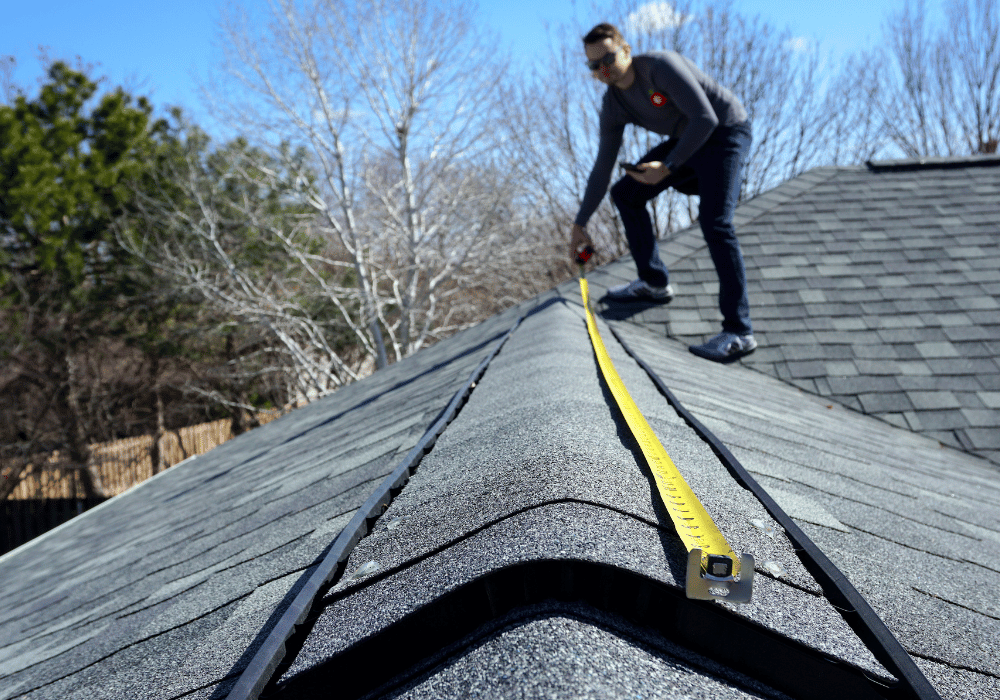
Choosing the right roofing company is essential. Look for a licensed, insured contractor with strong reviews and a proven history of quality work. A dependable roofer will provide clear communication, realistic timelines, and a thorough understanding of your roof’s unique requirements. For expert roof installation in London, Ontario, Shockwave Roofing is your trusted partner. We deliver comprehensive roofing solutions for both residential and commercial properties, ensuring top-notch results every time.
When Do I Need a New Roof?

When is it Time to Replace My Roof?
It can sometimes be difficult to tell when you need a new roof. Fortunately, there are several things you can take into account that can inform you a roof replacement is necessary from the age of your roof to its overall wear and tear. We’re here to help you answer some basic questions about roof replacement in London Ontario.
What are Some Signs You Need Roof Replacement?
There are several signs you can look for that can indicate you need a roof replacement. If you have an asphalt shingle roof, one of the more common signs that you roof has a lot of wear and tear is excessive granule loss. You can often see a lot of granule loss in the water runoff around your home, so this is a good thing to watch out for.
Frequent leaks should also indicate a roof replacement may be necessary. If you’ve had to have a lot of repairs or if you’ve noticed several water spots on your ceiling, it can be a good idea to reach out to a roofing contractor. They can look at the overall condition of your roof and tell you if you need to get a new roofing system. Another thing to watch out for is an excessive amount of damage. This can include cracks in the shingles and fractured shingles as well as damage such as curling or buckled shingles.
Should I Replace the Shingles or the Entire Roofing System?
In the majority of cases, you will only need to replace the shingles of your roof. However, if there is any damage to the roofing structure, you may need to replace the roofing system itself. A roofing contractor will be able to determine the extent of the roof replacement that will be necessary.
What is the Lifespan of an Asphalt Shingle Roof?
In the majority of cases, an asphalt shingle roof will be able to last for approximately 15 to 30 years. The actual extent of the roof’s lifespan will technically depend on other factors however, including the amount of maintenance that your roof receives over its lifespan as well as some other things such as the weather conditions in the area you live in.
What is the Lifespan of a Metal Roof?
Metal roofs can last for up to 50 years or more, depending on the quality of the metal and the installation. Metal roofs are also very durable and resistant to damage from the elements, making them a good choice for long-term investment.
Will a New Roof Lower My Energy Bills?
A new roof can help to lower your energy bills by improving the energy efficiency of your home. A well-insulated roof can help to keep heat in during the winter and out during the summer, which can reduce your need for heating and cooling. In addition, a new roof can help to prevent leaks, which can also lead to energy savings.
According to the U.S. Department of Energy, a new roof can save you up to 15% on your energy bills. The amount of savings you can expect will depend on the type of roof you have, the climate you live in, and the quality of the installation.
Is a Roof Replacement a Good Investment?
A roof replacement is a major investment, but it can be a good one if you consider the long-term benefits. A new roof can improve the energy efficiency of your home, which can save you money on your energy bills. It can also protect your home from damage caused by water leaks and other weather events. In addition, a new roof can increase the value of your home.
Does My Homeowner’s Insurance Cover a Roof Replacement?
Homeowner’s insurance typically covers roof replacements caused by a covered peril, such as a fire, hail, or windstorm. However, there are some exceptions to this rule. For example, most policies do not cover roof replacements caused by wear and tear or neglect.
If you are considering replacing your roof, it is important to check your homeowner’s insurance policy to see if it is covered. If it is not covered, you may want to consider purchasing a separate roof replacement policy.
Our team can be there to help you with your roof replacement. If you need a roof replacement in London Ontario reach out to the team at Shockwave Roofing. Call today at 226-977-1132 for more information and to learn more about our services.
